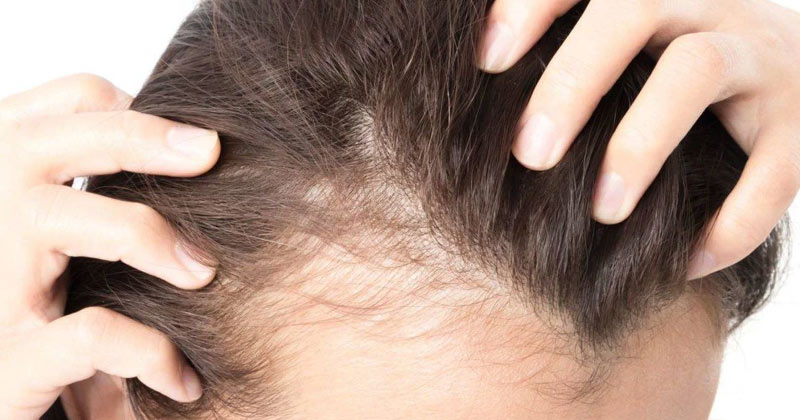Androgenic alopecia or female pattern baldness is a type of hair loss faced by women when they reach a certain age. It is very similar to the male pattern baldness or androgenic alopecia in males, except in women the pattern of baldness is different.

Female pattern baldness is often hereditary. It usually gets triggered during or after menopause therefore hormones are likely responsible for female pattern baldness. If you notice that your hair is falling, consult your doctor or a dermatologist. They will determine whether you are having female pattern baldness or another type of hair loss.
Usually, in female pattern baldness, the growing phase of hair slows down. It also takes longer for new hair follicles to begin growing. Moreover, hair follicles shrink in size, leading to the growth of thinner hair which is prone to breakage. Keep in mind that it is very normal for women to lose about 50 to 100 strands of hair each day, but female pattern baldness can cause you to lose many more and that too at a very rapid time.
Doctors have categorised female pattern baldness into three types:
Type I- In this, a small amount of thinning starts around your forehead region.
Type II- In this type, widening of the part begins, with increased thinning around it.
Type III- In this type, thinning is visible throughout, with see-through patches at the top of the scalp.
One of the prime reasons for female pattern baldness to occur is due to genetics. Hair loss is often passed down from parents to their children along with other genetic traits, and many different genetic factors are involved in the occurrence of it. You can inherit these genes from either of your parent. Someone is more likely to have female pattern baldness if their mother, father, or any other close relatives have ever experienced hair loss inducing medical problems. But many times it is caused by any underlying endocrine condition, so it is always advised to consult your doctor.
Unlike men who develop male pattern baldness in their early 20s, women are less prone to developing female pattern baldness before midlife. Women are very likely to start losing hair or experience any kind of hair fall after they get into their 40s, 50s, and beyond.
Also Read: Don’t Know How To Stop Hair Fall? Check Out These Home Remedies For Hair Fall With Proven Results

In men, high levels of male sex hormones, called androgens are the main contributors to hair fall. It is usually considered that a high concentration of androgens is also responsible for female pattern hair loss. Factors like smoking and alcohol may also increase the risk of developing female pattern hair loss as observed in various cases.
Dermatologists and specialists are the best people to reach out to, in case you are noticing more than the regular amount of hair fall and thinning of hair. These people are more experienced and knowledgeable to diagnose the problem at the earliest and provide helpful solutions for it. If your doctor suspects any other type of hair loss, he may also perform a blood test to check your levels of thyroid hormone, iron, androgens, or other substances that can affect the growth of hair.
As far as the treatment is concerned, there is no permanent treatment for the female pattern baldness. Still, early diagnosis is suggested, as it can enable you to get an accurate treatment plan and can minimize future hair loss up to a great extent. The treatment plan will likely consist of one or more medications approved to treat hair loss.
Hair loss is more common in women than in men, however, it’s not as severe as the male pattern baldness. Moreover, one-third of women have experienced serious hair fall at some point in their lives which is induced by stress, pregnancy, postmenopause, and others. There are various supplements and medicines that have been widely consumed and described by doctors, however, before trying any of them we would request you to get yourself checked with a dermatologist to get a better understanding of your condition. Early diagnoses can save you from an escalated version of the disease with long term impact.
Also Read: White Spot Disease: Pigmentation Disorder in The Skin
A healthy and fit lifestyle can also reverse the condition since it directly impacts our overall emotional and mental well-being and as we all know, a great deal of hair fall is induced by stress and tension. Hence, do make sure to keep yourself occupied with hobbies or activities that keep you intellectually and physically stimulated and healthy.


